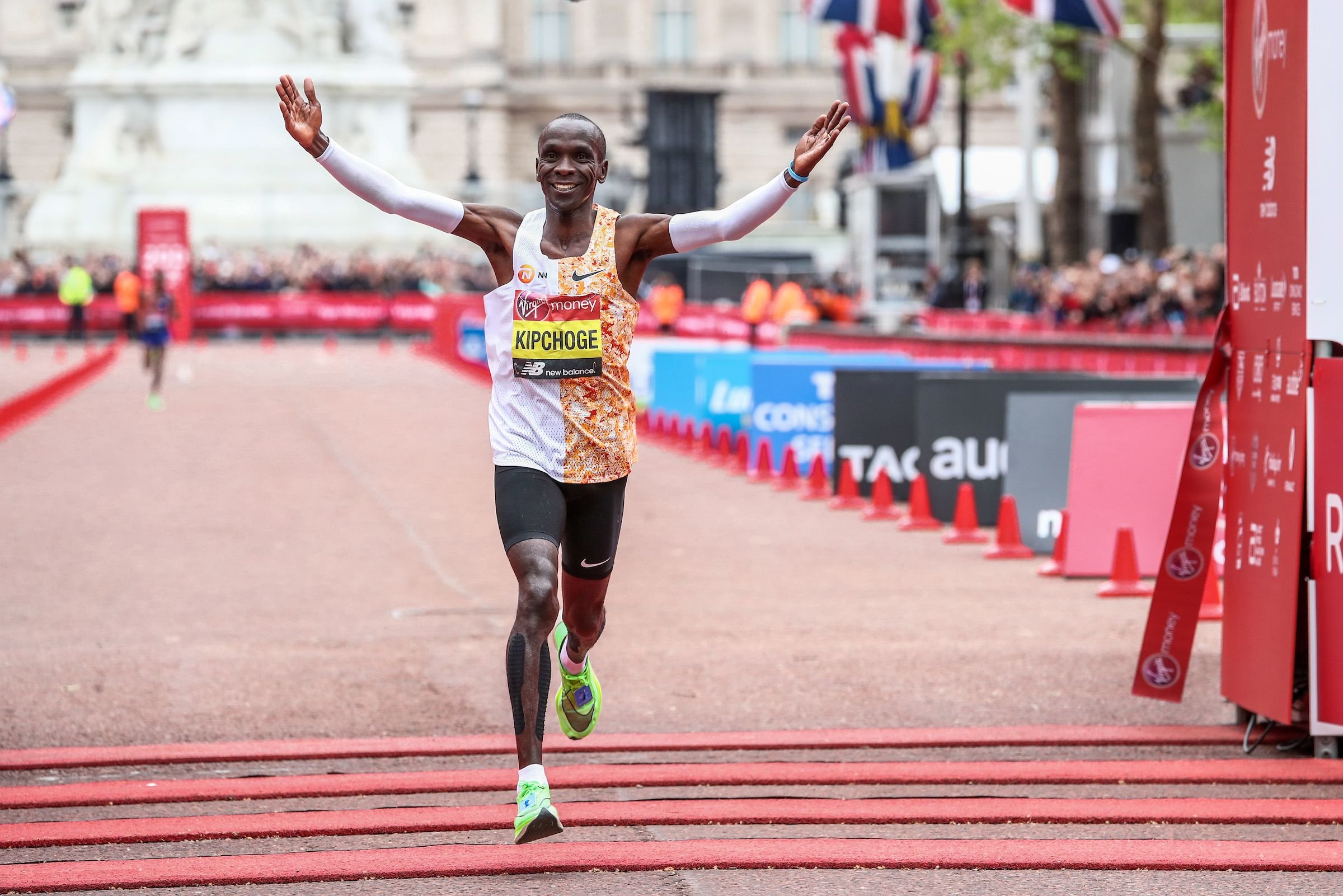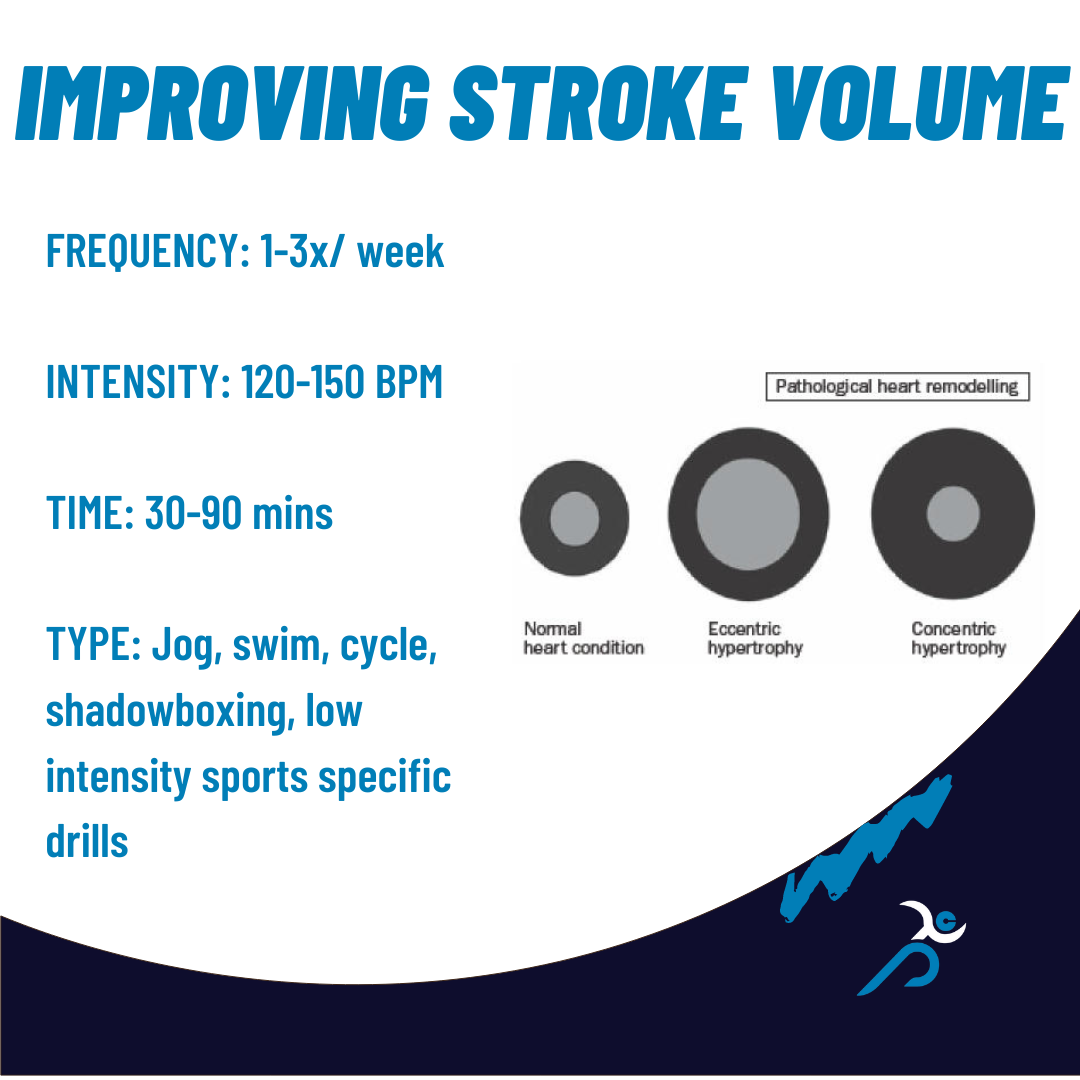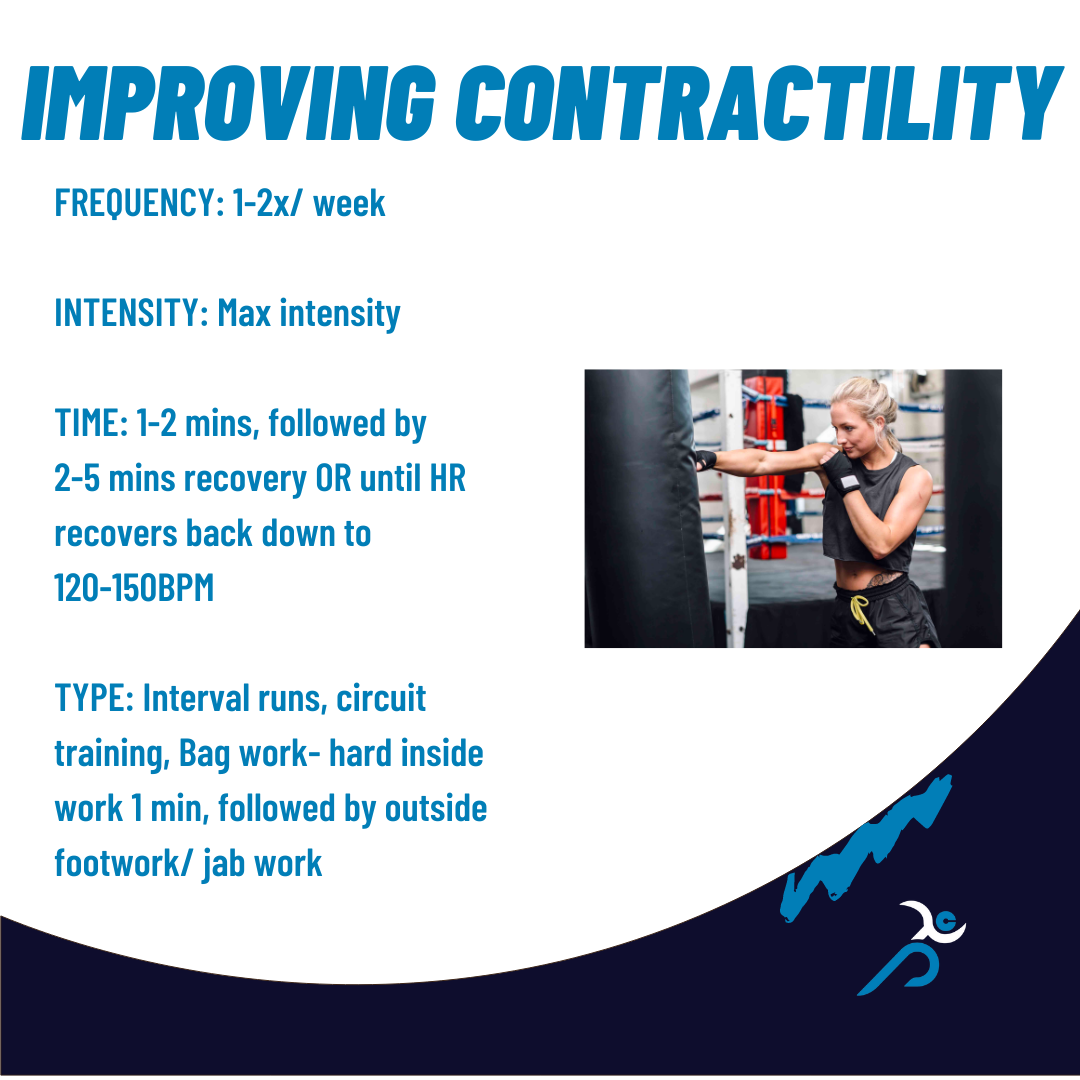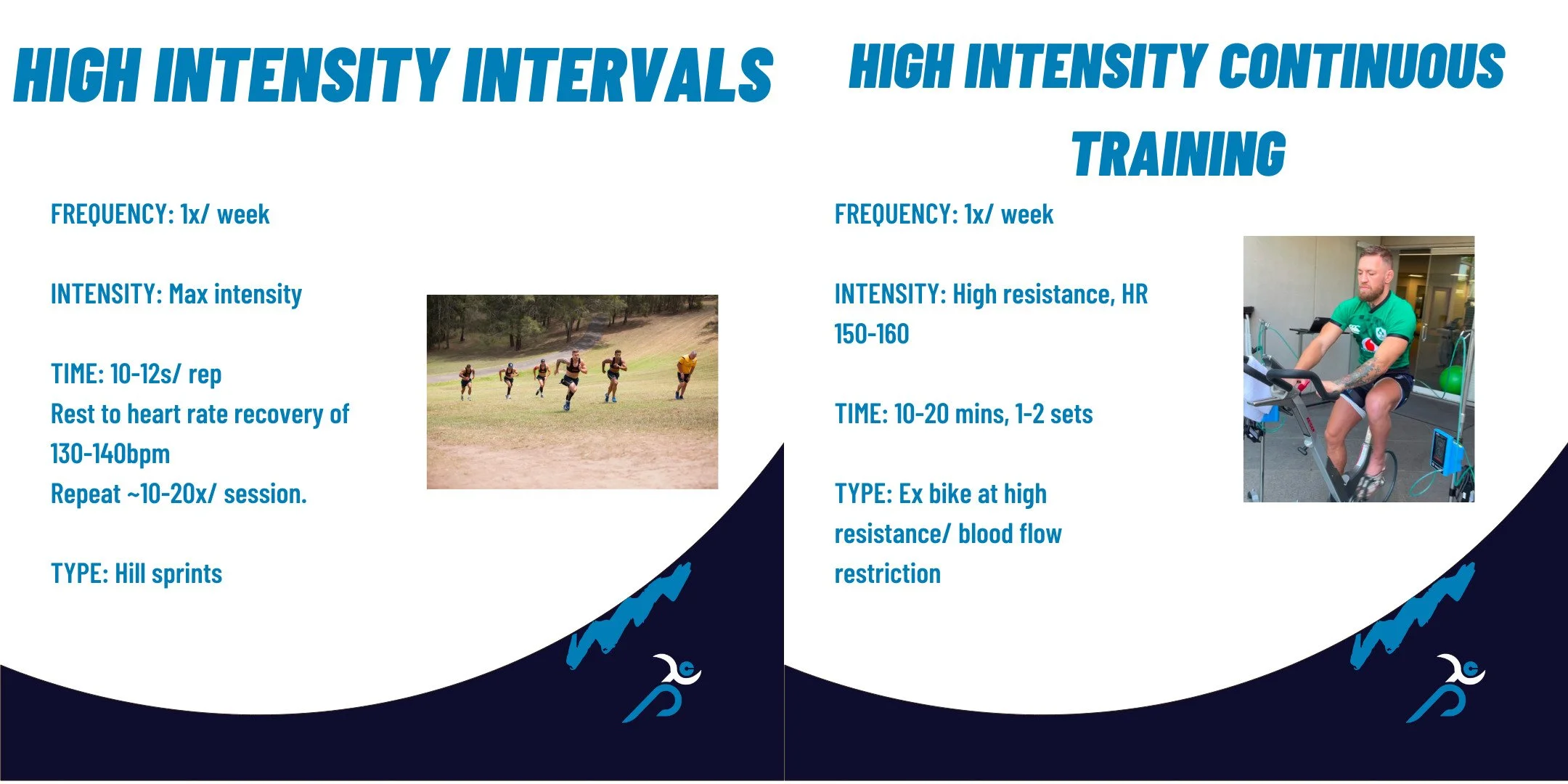Part 1: the art and science of Conditioning (the Aerobic System)
Contents:
Introduction
Basic components of conditioning: Energy Production and Energy Utilisation
The Aerobic System
Conditioning protocols for the Aerobic System
INTRODUCTION
When I hear the word “conditioning”, I always think of Rocky Balboa running through the streets of Philadelphia in preparation for his fight against Apollo Creed:
Starting out as a physiotherapist earlier on in my career, I always JUST managed the injured area without considering conditioning. For example, if someone came in for a knee injury, I would have a checklist of a few things e.g:
Restore range of movement
Strengthen the knee and muscles around it
Ensure that they can jump, change direction and sprint off of it.
BUT, I had some athletes coming back after returning to play with some sort of niggle, or even worse a re-injury a few games down the line. This got me really thinking… I’ve ticked all the checkboxes that I needed to AND they were stronger than they were before their injury. So why was this happening?
The biggest thing I missed was CONDITIONING. It was all well and good to hit a milestone leg press and triple hop, but this was in the constraints of a clinic. Sure, they could ace these “tests”, but did they have enough FITNESS to sustain these movement qualities over say, a 90 minute game?
There are many ways to build conditioning. From bikes, ski-ergs, rowers etc. But, one of the easiest ways to build conditioning is through RUNNING, otherwise known as ROADWORK. Why?
It replicates the demands/ nature of field/ court based sport in terms of body positions, postures etc.
It can be done any time, and anywhere.
You can sprint, use intervals, jog at a steady pace or even some hill work to keep it spicy.
Variables can be manipulated to create your desired training effect, so the possibilities are endless
So, in this article we will mainly use running as an example for conditioning.
2. The basics of conditioning: Energy Production and Energy utilisation
Here is a nice summary of the components of conditioning from Joel Jamieson’s book, Ultimate MMA Conditioning (2009).
In order to be “fit” your body needs to be able to:
1. PRODUCE energy quickly, efficiently and over the desired duration of your sport
2. USE this energy quickly and efficiently and over the desired duration of your sport
ENERGY PRODUCTION
Our muscles generate motion through the breakdown of a molecule called adenosine triphosphate (ATP) which comes from food. ATP breaks down into adenosine diphosphate (ADP) and inorganic phosphate (Pi), releasing energy to generate energy for muscle motion. Energy production refers to the availability of ATP for our muscles to then use.
Think about your body as a car. Power refers to how quickly your car can pump petrol from your fuel tank into the engine. Capacity refers to how big your fuel tank is. And the potential of energy production is a combination of how well the engine is built and the computer software to run the car smoothly and efficiently.
So in summary, to improve energy production, we need to:
Appropriately condition the body to provide this energy quickly (power)
Appropriately condition the body to provide this energy for the duration of your sport (capacity)
How well your cardiovascular, metabolic and neural systems work together as a unit in order to run the above two processes (biological power)
ENERGY UTILISATION
The other side of the equation of conditioning is how well this energy is used once the supply is there. You can fill up the car with plenty of petrol, but can it convert this into movement and locomotion?
A lot of this is dependent on central systems (the brain and nervous system):
How well can the brain regulate energy expenditure
How skilled are you so that the brain doesn’t drain energy to execute movements
The other component of this is how the muscles themselves use this energy (neuromuscular contractility).
the three ENERGY systems
There are three main energy systems that come into play during activity:
Anaerobic alactic (ATP-PC)
Anaerobic lactic
Aerobic
The intensity and duration of the task dictates which energy system predominantly supplies your muscles.
The anaerobic systems (alactic and lactic) produce high power output but only for a short period of time. This is because these systems can operate without the presence of oxygen, and therefore use less complicated chemical reactions to produce ATP (remember this is the fuel for our muscles?).
The reason why the anaerobic system can’t sustain power output for a long time is due to the accumulation of byproducts from these chemical reactions. Lactate and H+ (acid) are produced as a byproduct in the absence of oxygen. It is thought that H+ can induce fatigue and inhibit muscle function.
For example, sprinting. It is performed at maximal intensity for bouts of 10s at the elite level:
The aerobic system is quite the opposite. It is a system that produces low power output, but can be sustained for an extremely long period of time. The aerobic system is dependent on oxygen and involves, longer chemical steps to produce ATP. The byproducts of of the aerobic system are carbon dioxide and water, which are more or less expelled and are non harmful.
Think of marathon/ultra runners when you think about the aerobic system. They move slowly, but for an EXTREMELY long period of time (2hrs+) :
The aerobic system produces energy for the vast majority of cells in the human body. It is also the only system that can metabolise fat for energy (keep in mind fat molecules are more energy dense than carbs and protein).
In this blog, we will go through the importance of developing a strong aerobic system as well as ways to develop it.
3. the Aerobic system
The aerobic system is quite important for most field based and combat sports. Even something as explosive as rugby league, where there are repeated bouts of sprinting and tackling, the aerobic system still ticks in the background. Also note that rugby league is a game of 2 x 40 minute halves, and not a sprint.
The aerobic system is there to serve the anaerobic system. It helps your body body recover from bouts of explosive/anaerobic activity by clearing out fatigue-inducing byproducts as well as restock energy stores for more bouts of power based tasks. Your fast twitch muscle fibres (which are recruited to a higher extent in power/speed based tasks) can draw from both the anaerobic and aerobic systems for energy production. Whereas your slow twitch muscle fibres rely on just the aerobic system.
”The aerobic system is there to serve the anaerobic system”
The aerobic system can also be trained to produce higher power output. This basically means you can utilise your aerobic system for speed/power based tasks for longer, without dipping into the anaerobic system (remember how this system produces fatigue more quickly?). I will explain why through the concept of lactate thresholds.
Lactate (Anaerobic) Threshold Changes with AEROBIC CONDITIONING
Let’s rehash back to the last chapter:
“The reason why the anaerobic system can’t sustain power output for a long time is due to the accumulation of byproducts from these chemical reactions. Lactate and H+ (acid) are produced as a byproduct in the absence of oxygen. It is thought that H+ can induce fatigue and inhibit muscle function.”
Lactate doesn’t contribute to fatigue (this is another rabbit-hole we won’t delve into), but it is often used as a proxy for how hard the anaerobic system is working.
Here, we can see two things on this graph:
Lactate threshold (LT) in the trained group (red line) is shifted towards the right (i.e. LT is at 11.8 compared to 10)
For the same given running speed above LT, blood lactate levels are lower in the trained group (i.e. at 16 km/h blood lactate levels are at 6 compared to 8)
This means that firstly, the aerobic system can contribute to faster running speeds before the body has to shift to the anaerobic system (point 1). And secondly, the aerobic system is able to produce energy at a faster rate (point 2), hence the lower lactate levels at higher running speeds.
Training adaptations
There are two adaptations that we look to achieve when looking at conditioning.
Improving OXYGEN SUPPLY
How MUCH blood can be pushed out (stroke volume) with each heartbeat?
How HARD this blood can be pushed out (cardiac contractility) with each heart beat
Improving OXYGEN EXTRACTION
Increasing number & size of slow twitch muscle fibres
Improving oxygen usage of fast twitch muscle fibres
We will run through several training methods to achieve these adaptations.
4. conditioning protocols for the aerobic system
1. Improving stroke volume
This is usually the starting point for any new athlete looking to get into improving fitness. The way to improve stroke volume is to improve how much your heart can fill up with blood. The way we achieve this is through slow and long runs.
Slow runs at lower heart rates (120-150 beats per minute) allows for your heart to fill up with blood and expand. This process over time produces an effect called eccentric hypertrophy, where the heart dilates to allow more blood to fill up. This essentially increases how much blood can be pushed out with each heartbeat.
The best way to estimate this is through a heart rate monitor or a smart watch (slightly less accurate and reliable). If you don’t have access to these, you will know the intensity is at the right level if you can maintain a conversation whilst you are running.
This is to be performed for a period of 30 to 90 minutes.
Alternatives to running can include cycling, skipping, swimming or low intensity drills specific to your sport (e.g. shadowboxing)
2. Improving Cardiac Contractility
Cardiac contractility refers to how hard the heart beats to push out blood to your muscles. The best way to achieve this is through interval training. This also improve mitochondrial density in the heart.
You may have heard the good old saying:
“Mitochondria is the powerhouse of the cell”
Mitochondria are little units that live in your cells, including muscle cells (the heart is a muscle too!), which draw on oxygen to create ATP (again, our fuel source). By improving mitochondrial density, we can improve heart function towards higher heart rates.
Cardiac power intervals are performed at high intensities for 1-2 minutes. This is followed by either complete rest, or active recovery until the heart rate recovers back down to about 120 BPM.
You can achieve on a run through a hard max effort run followed by a walk or slow jog. You can also be sports specific too and incorporate skillwork,for example, doing hard inside work on the heavy bag 1 min followed by 2 mins of outside footwork and jab.
3. Improving Oxygen extraction
So the last two methods look at improving how well the heart functions to transport oxygenated blood from the heart to the muscles. The second part of the equation is once all this blood gets to the muscles, can they utilise it properly?
The first method is to use a heavy resistance but performed at low speeds. This helps recruit those fast twitch fibres, but still supply them with oxygen so they learn to become less fatiguable. From this, higher power outputs can be achieved before dipping into the anaerobic system.
Hill sprints can be a good way to achieve this adaptation if you wanted to utilise interval training or hopping on an exercise bike cranked up to a high resistance (or blood flow restriction cuffs if available) over time as an alternative.
As this protocol is extremely fatiguing, it is best to tack this after a hard training session, or to do it as far away from competition/ playing days as possible.
So how often, how long and how hard should you be running? It really comes down to a few things:
What is your sport, and what does your sport require you to do?
Where are you lacking in your conditioning?
Where are you now in relation to your competition (e.g. off-season vs. in-season, fight camp)?
What is your current training schedule and time constraints?
Injury/ rehab constraints?
5. conclusion
Hopefully this blog has been able to help you out with your own training and has given you a broader understanding of aerobic conditioning. This is often the last hurdle of rehabilitation that is neglected but extremely important for injury prevention and performance. If you had any questions or concerns, feel free to get in touch with us:
☎️: 0432 332 131
✉️: info@theclubphysio.com.au
📸: instagram.com/theclubphysio
📠: 8088 4338
REFERENCES:
GOFFART, S., VONKLEISTRETZOW, J., & WIESNER, R. (2004). Regulation of mitochondrial proliferation in the heart: power-plant failure contributes to cardiac failure in hypertrophy. Cardiovascular Research, 64(2), 198-207. doi: 10.1016/j.cardiores.2004.06.030
Grgic, J., Homolak, J., Mikulic, P., Botella, J., & Schoenfeld, B. (2018). Inducing hypertrophic effects of type I skeletal muscle fibers: A hypothetical role of time under load in resistance training aimed at muscular hypertrophy. Medical Hypotheses, 112, 40-42. doi: 10.1016/j.mehy.2018.01.012
Jamieson, J. (2009). Ultimate MMA conditioning. [Kirkland, Washington]: Performance Sports Inc.
Landow, L. Ultimate conditioning for martial arts.
Mihl, C., Dassen, W., & Kuipers, H. (2008). Cardiac remodelling: concentric versus eccentric hypertrophy in strength and endurance athletes. Netherlands Heart Journal, 16(4), 129-133. doi: 10.1007/bf03086131
Tzvetkov, S. (2017). Indicators of Effectiveness and Economy In Evaluation of Functional Working Capabilities of Elite Athletes. Activities In Physical Education And Sport, 7(1), 95-99.











